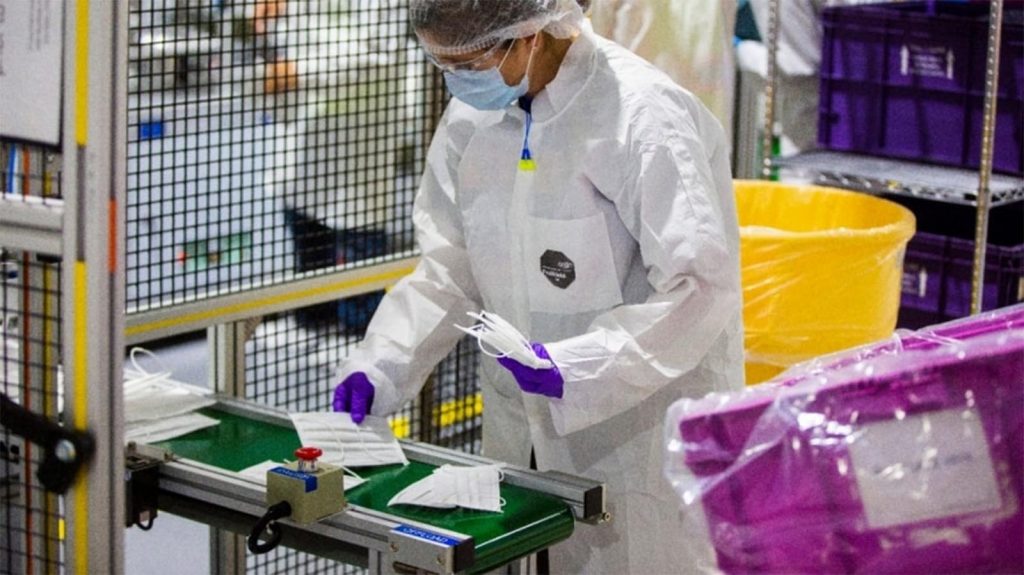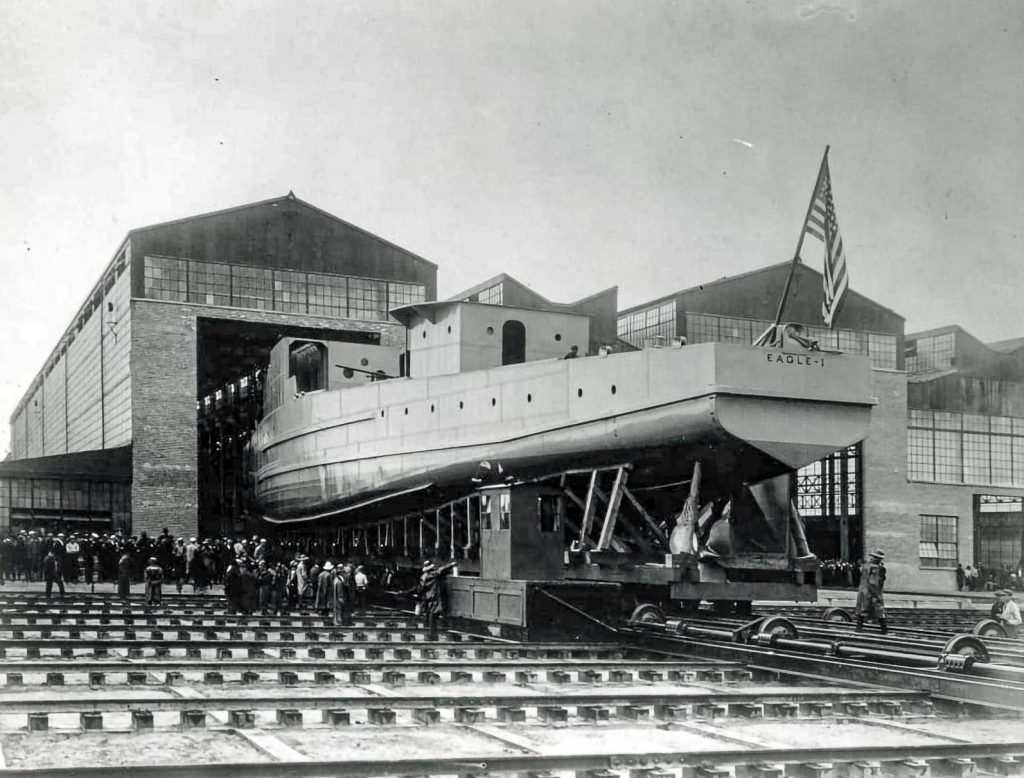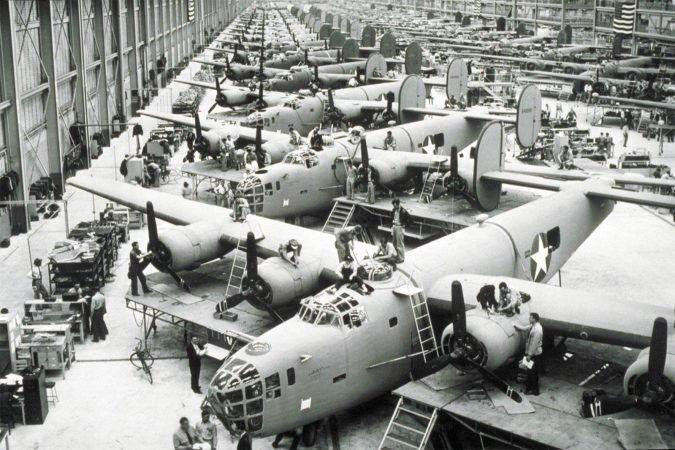It’s easy to drive right by the non-descript building in Vreeland, Michigan, you might even miss the sign that reads, “Ford.” Until a few weeks ago, the facility was idled, like most all North American automotive operations, due to efforts to control the coronavirus pandemic. But drive by now and you’ll notice that it’s a hub of activity.
If you find a way to get inside you’ll discover scores of workers decked out in the masks and other protective gear you might otherwise expect to see on a hospital floor. It’s all part of the process of keeping these union volunteers safe as they race to roll out the respirators desperately needed at hospitals in Michigan and other parts of the country.
The effort to battle the coronavirus is frequently compared to a war. And, so, it’s appropriate that Ford is playing a critical part. The automaker repeatedly helped defend the nation during prior battles over the past century. Along with its traditional, cross-town rivals, it was the foundation for what came to be known as the “Arsenal of Democracy” during World War II. Today, Ford is serving as part of what is being called the “Arsenal of Health.”

FORD IS MANUFACTURING FACE MASKS AND PURSUING CERTIFICATION FOR MEDICAL USE AT ITS VAN DYKE TRANSMISSION PLANT
The Vreeland facility, which otherwise serves the nearby Flat Rock, Michigan assembly plant, was rapidly converted into a medical production facility when Ford officials recognized the nationwide shortage of medical gear facing American first responders. It was a herculean effort reminiscent of what the automaker undertook during World War II.
“We knew that to play our part helping combat coronavirus, we had to go like hell and join forces with experts like 3M to expand production of urgently needed medical equipment and supplies,” said Jim Baumbick, vice president, Ford Enterprise Product Line Management.
As part of their ad hoc collaboration, Ford manufacturing specialists rushed to 3M’s own plant to find ways to boost production of the powered air-purifying respirators (PAPR’s) used to keep doctors, nurses, and other medical personnel safe. With demand still outflanking production, Ford engineers stepped in, coming up with their own version of the 3M respirator, wherever possible using off-the-shelf parts like climate control fans from Ford F-Series pickups.

JIM BAUMBICK, VICE PRESIDENT, FORD ENTERPRISE PRODUCT LINE MANAGEMENT
Production began last week at the Vreeland plant and Ford and 3M have the ability to roll out more than 100,000 PAPR’s by June when experts are hoping to see the pandemic taper off. But, added Baumbick, “We’re preparing, if the need is there, to continue this longer to ensure that we’re really helping all these brave men and women on the front line.”
The powered air-purifying respirators provide an additional level of protection for medical personnel who might have direct contact with patients stricken by COVID-19, the disease caused by the coronavirus. Ford is also turning out other, less technically sophisticated medical gear – officially known as personal protection equipment, or PPE.
The automaker already has rolled out 5 million face shields, as well as medical-grade masks, and it most recently added production of medical gowns. In typically creative fashion, Ford found a way to again make use of off-the-shelf supplies, in this case, a waterproof nylon fabric normally used for airbags but now repurposed to save lives in a different way.
“The need to protect our medical teams is heightened – Ford’s gown production could not come at a better time during this crisis,” said David Claeys, president of Beaumont Health hospitals in Dearborn and Farmington Hills. “Our frontline health care workers are working around the clock to treat COVID-19 patients and we need the necessary supplies to support them.”
Ford has a long history of coming to America’s defense. While company founder Henry Ford was an active proponent of peace, he quickly lent the automaker’s support once it became clear the country was going to need to enter into “the War to End All Wars” in 1917.
“From the spring of 1917 through autumn of 1918, Ford’s factories continuously supported the American war effort by producing war boats, military trucks, cannons, and many other war products as well as committing research and development work to a variety of armor technologies for vehicles and soldiers,” noted a report by the Michigan Tech Research Institute.
Some of the first products assembled at Ford’s massive River Rouge Complex were Eagle Boats used to hunt down German submarines. When the war ended, the 1.5 square-mile complex shifted to producing tractors, cars, and other civilian goods. Little more than two decades later it would retool for another battle.

EAGLE BOAT 1 BEING LAUNCHED AT FORD’S ROUGE RIVER PLANT
As was the case in 1917, most Americans had hoped to avoid entering into the war spreading across Europe and Asia. But during one of his legendary “fireside chats,” on May 26, 1940, President Franklin Delano Roosevelt made it clear the country had to prepare for “the coming storm.” Roosevelt declared the U.S. had to “harness the efficient machinery of America’s manufacturers” for a production effort never before seen, calling for 50,000 combat aircraft to be ready within just the next 12 months.

1943 FORD WORKER HELPS AMERICA TAKE TO THE SKIES
To put that into perspective, wrote author Tim Trainor, that was more aircraft than the U.S. had built since the Wright Brothers’ first flight. The American Army Air Force, at that moment, had just 3,000 aircraft – and most were obsolete.
“The Rouge,” as Ford’s big manufacturing complex was commonly known, was soon pumping out all manner of military material: aircraft engines, aircraft components and parts, tires and tubes, armor plates, and tractors. With more than 275,000 GP(W) Jeeps being produced across all the Ford facilities nationwide. But another Ford plant, a half-hour to the west, would soon take the battle to the air.
It seemed an unlikely move when the U.S. War Department announced that Ford would help Consolidated Aircraft produce its big B-17. The four-engine bomber, with its distinctive twin tail fins, weighed 18 tons – 15 times as much as a Ford Model A – and measured 60 feet in length. Critics warned it would take years to get them into production, but Ford quickly proved them wrong.
Much of the credit belonged to Charles Sorensen, the Ford production chief who went to California to study Consolidated’s own production plant. There, he found “no sequence or orderly flow of material.” Sorensen stayed up that entire night, sketching out the best way to do things on the back of a placemat.
ICONIC ROSIE THE RIVETER POSTER WITH THE WORDS “WE CAN DO IT!”
Despite requiring 450,000 parts and 360,000 rivets, the Willow Run Assembly Plant would soon be rolling out one B-24 every hour. But “Cast Iron Charlie,” as Sorenson was known, wasn’t the only hero of the story. The plant was the birthplace of “Rosie the Riveter.” At any hour of the day, there were thousands of women, many of whom had never before worked outside their homes, keeping the plant running. By the time production ramped down, Willow Run had produced more than 6,000 B-24s.
Seventy-five years later, Ford is back serving a war. This one is against an invisible enemy. The coronavirus is proving as deadly as any enemy America has faced in the past. But the gear Ford is providing will help first responders – the front-line soldiers in this war – stay out of harm’s way.






















